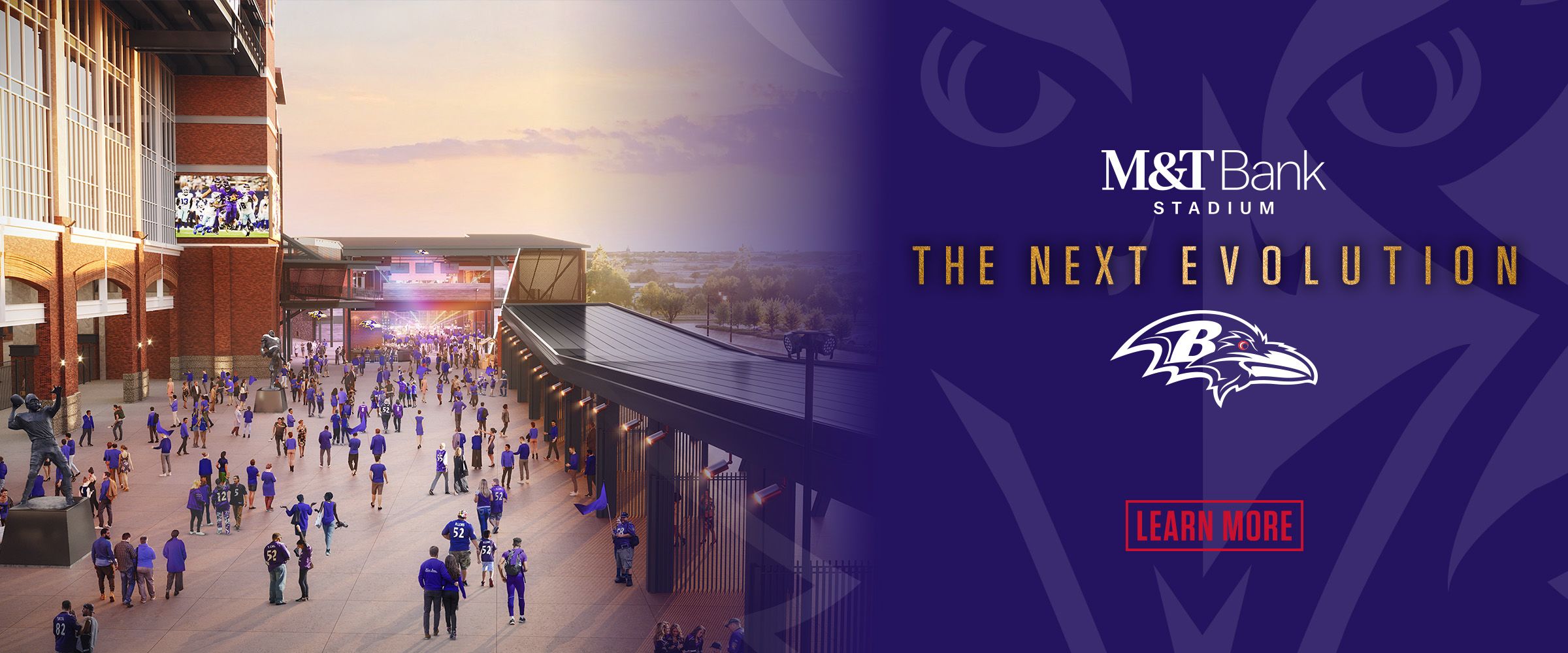In a Baltimore Sun interview earlier this week, Baker Koppelman, the Ravens' senior vice president of ticket sales and operations, made the irrefutable statement that there is no good time to raise ticket prices.
Fans don't like it, period, regardless of the team, sport or city. Even in good times, when wins are piling up, they don't like digging deeper into their pockets. Who does?
There's bound to be grumbling when a team announces a hike after its third non-winning season out of four, as the Ravens did earlier this week.
But when they rolled out their hike in conjunction with plans to spend $120 million of their own on significant upgrades to M&T Bank Stadium, the Ravens offered what I thought was a pretty logical rationale.
While it obviously would be preferable to do it when birds are singing after a winning season, recent sports history indicates that it's critically important that a team take care of its stadium – at all times. And yes, the Ravens need to do it, like, now.
I was shocked when Dick Cass, the team's president, pointed out that the Atlanta Falcons will become the 22nd NFL team with newer digs (either opened or planned) when they move into their new stadium later this year. Seriously? M&T Stadium is less than two decades old and already in the bottom third?
With that in mind, I think it goes without saying that the Ravens should continually work on sprucing up their place and keeping it modern and entertaining.
Let me put that another way: Any team that doesn't do it eventually ends up in an unfortunate situation.
For proof, look no further than the very fact that the Ravens are here. Remember why Art Modell left Cleveland? The Browns played in Municipal Stadium, which opened in 1931. Modell wanted a new place, but the political winds didn't blow his way. Baltimore offered him the same, sweet stadium deal the NFL turned down when it expanded to Jacksonville and Carolina. Modell grabbed it.
The press conference announcing the move was held where M&T Bank Stadium now sits because, well, it was all about the stadium.
Bill Parcells, the Hall of Fame coach, once made the statement that in the NFL "you are what your record is." But in the larger realm of franchises and sustainability, the truth is "you are what your stadium is."
Teams with new ones become more valuable, attain higher stature, host Super Bowls. And woe to those who can't keep up.
None of the three franchises currently on the move liked their stadium situations. The Chargers' place in San Diego was so old (built in 1967) it was named at one point for an influential sportswriter. Talk about the Paleozoic Era. The Raiders' home in Oakland opened in 1966. The dome where the Rams played in St. Louis opened in 1995 – yes, just three years before M&T Bank Stadium.
Don't get me wrong. I'm not suggesting that kind of calculus is in play here. Not in the least. The Ravens are an unabashed success story. Since starting from scratch in 1996, they've become a Baltimore institution, as popular as the Colts ever were.
But, ahem, the Colts did eventually leave because Bob Irsay couldn't get the new stadium he wanted from either the city or state.
Fortunately, the local powers-that-be built a fine stadium for Modell. They were on a roll, having just erected a new home for the Orioles that revolutionized baseball stadia. The Ravens' home still shimmers. The writers at Stadium Journey recently said it provides the NFL's best stadium experience, quite a feat given the newer competition.
But times have changed. Teams face a challenge from the in-home experience fans enjoy with large-screen hi-definition TVs and access to social media. The Ravens already started addressing that with a Wifi upgrade, and now comes a host of new, giant video display boards, intended to dazzle, along with new escalators and elevators, a new sound system and other bells and whistles.
Without delving too deeply into the economics, the Ravens are paying for the vast majority of it – as they should, in my opinion. And the ticket price hike is part of the equation.
I would never suggest fans should understand why they have to dig deeper into their pockets for anything. What they really want is a winning team to cheer for. But a stadium is a beast you constantly need to feed, regardless of your won-loss record, and even my math-challenged brain can understand that's what's going on here.



















